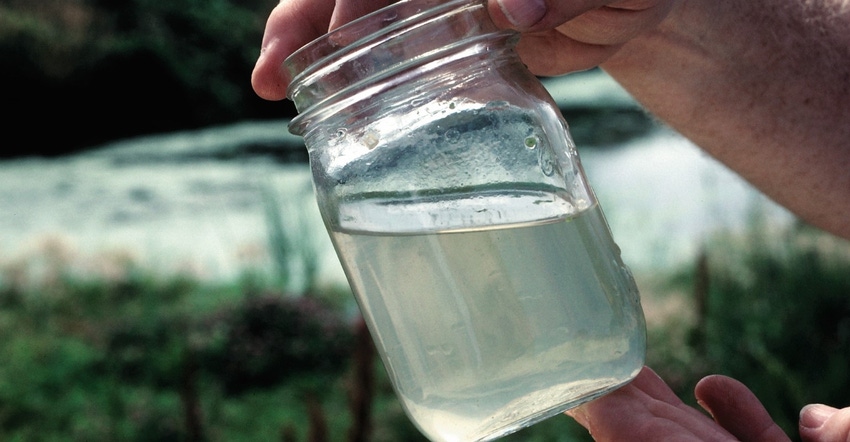Environmental groups say EPA has failed to update effluent guidelines since 2016.

Environmental groups filed a notice of intent to sue the Environmental Protection Agency for failing to update slaughterhouse wastewater guidelines as required by the Clean Water Act.
More than 8 billion chickens, 100 million hogs and 30 million beef cattle are processed each year in more than 5,000 slaughterhouses across the country. An estimated 4,700 of these currently are allowed to discharge processed wastewater directly into waterways or to publicly owned treatment plants, the environmental groups noted.
The Clean Water Act requires EPA to annually review, and potentially strengthen, industry-wide water pollution standards — called effluent limitation guidelines — for slaughterhouses to ensure that the guidelines keep pace with advances in technology that reduce the amount of pollution animal processing and rendering facilities discharge into the nation’s waterways.
Since at least 2016, EPA has failed to conduct the required annual reviews for meat and poultry slaughterhouses. The agency last revised a subset of the guidelines for slaughter facilities discharging wastewater directly into rivers and streams in 2004, but some slaughterhouses are still operating under guidelines originally established as far back as 1974, the environmental groups noted.
They claim that EPA also has failed to review whether “pretreatment” guidelines should be developed for slaughterhouses that send wastewater to publicly owned treatment facilities.
In the intent-to-sue notice, the groups explained that, according to EPA’s Preliminary 2016 Effluent Guidelines Program Plan, EPA determine that the estimated toxicity of the meat and poultry products category discharges primarily from nitrate compounds and hydrogen sulfide releases reported to the Toxic Release Inventory. In reviewing nitrate discharges, EPA stated that its 2015 preliminary review focused on five facilities whose nitrate compound toxic-weighted pound equivalents ranking increased from 2009 to 2003.
For hydrogen sulfide, EPA determined that four facilities accounted for the majority of these discharges. However, “EPA [was] uncertain as to how representative the data [was] of actual releases and concluded that more data was necessary for EPA to conduct further review.”
The Clean Water Act mandates that EPA conduct and complete a review of the effluent limitation guidelines and whether they’re appropriate once a year. The notice said EPA has failed to conduct a review since at least 2016.
“These reviews were not complete as EPA concluded that more data was necessary for the agency to conduct further review, and the agency cannot sidestep its duties under the [Clean Water Act] by pushing data-gathering and in-depth reviews to another year,” the notice said.
EPA revised some of the effluent limitation guidelines in 2004, while other facilities are only required to meet the originally proposed ones promulgated in 1974 and 1975.
The slaughtering and rendering processes generate wastewater that is contaminated with blood, oil, grease and fats that contain oxygen-depleting pollutants like nitrogen and phosphorus, pathogens and other contaminants. When released into waterways, these pollutants can drive excess algae growth, causing algae blooms that suffocate aquatic life and turn waterways into bacteria-laden public health hazards, the groups said in a statement.
"Scattered throughout our region, there are several slaughterhouses that have discharged high levels of pollutants into our local waterways, violating their permits with little or no enforcement," Betsy Nicholas of Waterkeepers Chesapeake said. "As an example, in a recent 18-month period, a meat processing plant in Pennsylvania violated its water discharge permit 62 times, discharging excessive amounts of nitrogen pollution into a tributary to the Susquehanna River."
Updated regulations would lead to significant improvements in many waterways across the country, especially in those areas of greatest industry concentration, the environmental groups contend.
According to a 2018 report by the Environmental Integrity Project, “Water Pollution from Slaughterhouses,” the most technologically advanced plants are also the best-performing plants, releasing far less pollution than the rest of the industry. Technology to dramatically reduce pollution from the industry clearly exists, but because of outdated guidelines, EPA and state agencies continue to set permit limits that allow slaughterhouses to discharge far too much water pollution, the report states. Meanwhile, 60 of the 98 plants reviewed by the Environmental Integrity Project release their wastewater to rivers, streams and other waterways that are impaired because of the main pollutants found in slaughterhouse wastewater.
In 2016, Environment America found that the processing plants of just a few large agribusinesses discharged more than 250 million lb. of toxic pollution into America’s waterways over a five-year period.
The Environmental Integrity Project and Earthjustice are filing the notice on behalf of Waterkeeper Alliance, Environment America, Center for Biological Diversity, Waterkeepers Chesapeake, Animal Legal Defense Fund and Food & Water Watch.
About the Author(s)
You May Also Like



.png?width=300&auto=webp&quality=80&disable=upscale)

